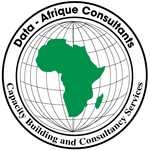|
|
Training Course on Introduction to GIS using ArcGIS Desktop
USD 3,000 |
Venue: Nairobi
Other Dates
| Venue | Date | Fee | |
|---|---|---|---|
| Kigali, Rwanda | 10 - 21 Mar, 2025 | USD4500 | |
| Nairobi, Kenya | 17 - 28 Mar, 2025 | USD3000 | |
| Nairobi, Kenya | 07 - 18 Apr, 2025 | USD3000 | |
| Mombasa, Kenya | 14 - 25 Apr, 2025 | USD3500 | |
| Nairobi, Kenya | 14 - 25 Apr, 2025 | USD3000 | |
| Nairobi, Kenya | 05 - 16 May, 2025 | USD3000 | |
| Dubai, United Arab Emirates | 12 - 23 May, 2025 | USD5500 | |
| Nairobi, Kenya | 19 - 30 May, 2025 | USD3000 |
A GIS (Geographic Information System) is a powerful tool used for computerized mapping and spatial analysis. A GIS provides functionality to capture, store, query, analyse, display and output geographic information. This course introduces GIS concepts and ArcGIS tools used to visualize real-world features, discover patterns, and communicate information. Using ArcMap and ArcGIS Online, the participants will work with GIS maps, explore data, and analyse maps and data as you learn fundamental concepts that underlie GIS technology.
Course Objectives
At the end of the course, the participant will be able to:
- Find and organize geographic data and other content for a mapping project.
- Display features on a GIS map and access information about them.
- Perform spatial analysis to answer questions.
- Share GIS maps and analysis results.
Duration: 10 Days
Who Should Apply
This course targets New Users; Data Editors; GIS Database Designers; GIS Managers; Data Editors; GIS Analysts; Map Designers; GIS Technical leads; and GIS Desktop Application Developers.
Course Content
Module 1: The ArcGIS platform
- Lesson introduction
- The ArcGIS platform
- Getting to know the ArcGIS platform
- Components used in this course
- Lesson review
Module 2: The basics of GIS
- Lesson introduction
- Applications of GIS
- ArcGIS online
- Sign in to ArcGIS Online
- Choose a base map
- Add a data fie to your map
- Save and share your map
- Lesson review
Module 3: Understanding GIS data
- Lesson introduction
- Turning geographic information into GIS data
- GIS data models
- Explore GIS data models in ArcMap
- Which data model is better?
- Working with tables
- Documenting your data
- Open ArcMap and create a folder connection
- View data in a GIS
- Identify various fie types
- View an item description
- Correct an error in an item's metadata
- Preview a dataset's geography and table
- Add data to the map
- Lesson review
Module 4: ArcGIS online
- ArcGIS Online content
- GIS services and web maps
- Web mapping applications and mobile apps
- Tools and data from ArcGIS Online
- Explore GIS content using ArcGIS Online
- Browse ArcGIS Online for web content
- Browse ArcGIS Online for desktop content
- View an item's details
- Examine options for opening ArcGIS Online items
- Lesson review
Module 5: The importance of coordinate systems
- Lesson introduction
- What is location?
- How spatial data store’s location
- Geographic coordinate systems
- Working with data in different geographic coordinate systems
- Projected coordinate systems
- Spatial properties and distortion
- Understanding distortion
- Work with coordinate systems
- Identify the coordinate system for a dataset
- Identify the coordinate system for another dataset
- Identify a dataset with a different coordinate system
- Identify a dataset with an unknown coordinate system
- Assign a coordinate system to a dataset without a spatial reference
- Change the coordinate system for a dataset
- Lesson review
Module 6: Acquiring and selecting GIS data
- Lesson introduction
- Methods for obtaining GIS data
- Accessing GIS data
- Considerations for creating GIS data
- Creating data
- Considerations for choosing GIS data
- Evaluating GIS data
Module 7: GIS Data
- Gather and evaluate GIS data
- Consider the data you need
- Examine the data you have
- Add data from another organization
- Add data from ArcGIS Online
- Transfer files from one geodatabase to another
- Import shapefiles into the geodatabase
- Lesson review
Module 8: Interacting with a map
- Lesson introduction
- Symbology and visualization
- Finding, identifying, and selecting features
- Asking questions and getting answers
- Getting information from a GIS map
- Explore a map using ArcMap
- Navigate the map
- Modify symbology
- Identify features
- Find features
- Export selected features from a fie to a geodatabase
- Select features
- Examine an attribute table
- View data change over time
- Explore a map using ArcGIS Online
- Navigate the map
- Modify symbology
- Identify features
- Locate addresses and features
- Select features and view an attribute table
- Lesson review
Module 9: Performing spatial analysis
- Lesson introduction
- The geographic approach revisited
- Questions you can answer with GIS
- What is spatial analysis?
- Geoprocessing in analyses
- Common analysis tasks
- Perform spatial analysis with common analysis tools
- Open ArcMap and examine the map document
- Extract features in your area of interest
- Identify vulnerable facilities in Lee County
- Overlay the Cat3 layer with Lee County
- Identify hospitals close to the storm surge inundation polygon
- Lesson review
Module 10: Sharing results
- Lesson introduction
- The importance of sharing results
- Sharing content through ArcMap
- Sharing content through ArcGIS Online
- Export the map as a PDF
- Create a map package and upload it to ArcGIS Online
- Create a web map
- Customize map symbology and save the map
- Create a web mapping application
General Notes
- This course is delivered by our seasoned trainers who have vast experience as expert professionals in the respective fields of practice. The course is taught through a mix of practical activities, theory, group works and case studies.
- Training manuals and additional reference materials are provided to the participants.
- Upon successful completion of this course, participants will be issued with a certificate.
Course Booking
Please use the “book now” or “inquire” buttons on this page to either book your space or make further enquiries.
| Nairobi | Mar 03 - 14 Mar, 2025 |
| Kigali, Rwanda | 10 - 21 Mar, 2025 |
| Nairobi, Kenya | 17 - 28 Mar, 2025 |
| Nairobi, Kenya | 07 - 18 Apr, 2025 |
| Mombasa, Kenya | 14 - 25 Apr, 2025 |
| Nairobi, Kenya | 14 - 25 Apr, 2025 |
| Nairobi, Kenya | 05 - 16 May, 2025 |
| Dubai, United Arab Emirates | 12 - 23 May, 2025 |
| Nairobi, Kenya | 19 - 30 May, 2025 |
Registration: 08:00:am - 16:00:pm
| USD 3,000.00 | |
DUNCAN KARIUKI +254723360025
Related Courses
 Advanced Web Based Mapping Applications using Open Source GIS Tools Training Course
Advanced Web Based Mapping Applications using Open Source GIS Tools Training Course
12 days, 03 - 14 Mar, 2025
Data-Afrique Consultants
 Training Course on Website Design and Development using Joomla CMS Course Joomla 3 X
Training Course on Website Design and Development using Joomla CMS Course Joomla 3 X
5 days, 03 - 07 Mar, 2025
Data-Afrique Consultants
 Training Course on Financial Management Budgeting and Auditing of Donor Funded Projects
Training Course on Financial Management Budgeting and Auditing of Donor Funded Projects
12 days, 03 - 14 Mar, 2025
Data-Afrique Consultants





.png)